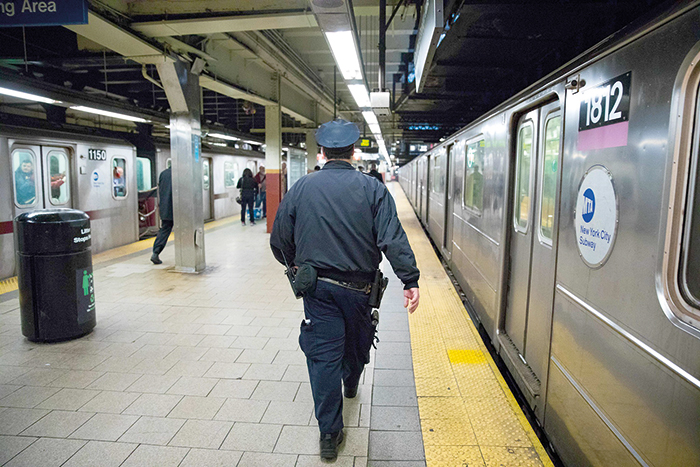Photo Courtesy of Benjamin Kanter/Mayoral Photography Office
“This enables vulnerable New Yorkers in the subway system to be connected to the 311 system and all the significant resources and assistance it can offer,” said Sarah Feinberg, interim president of MTA New York City Transit.
By Forum Staff
Mayor Bill de Blasio, the Department of Homeless Services, the Department of Information Technology, and the Metropolitan Transportation Authority on Friday announced the expansion of NYC311 into the city’s subway system. For the first time ever, de Blasio lauded, New Yorkers will be able to request outreach assistance for individuals believed to be experiencing unsheltered homelessness; report physical conditions within subway stations that are obscuring public space and must be addressed; and identify non-aggressive panhandling for 311 to better connect those New Yorkers who are panhandling to support services.
“Over the past year-plus, in response to the COVID-19 pandemic and the MTA’s shutdown of overnight subway service, our staff at DSS-DHS, our contracted providers, and our incredible, dedicated outreach teams stepped up to meet the moment, redoubling engagement of New Yorkers in need on the subways, including every night at end-of-the-line stations as the subways closed, to offer them support and pathways to services and stability,” said Department of Social Services Commissioner Steven Banks. “Through these efforts, involving thousands of engagements focused on building trust, hundreds of individuals engaged by outreach teams on the subway train or subway platform are now in shelter, receiving services – a testament to the importance of our teams’ compassionate approach to encouraging people to accept services so they can get back on their feet. With this technology upgrade, we and our outreach teams, who continue canvassing the subways 24/7 offering services, will be able to further pinpoint outreach efforts, responding to requests for assistance from New Yorkers as they may be reported directly from subway stations and platforms, so we can continue to build on this year’s progress.”
Officials noted that New Yorkers should continue to call 911 if they see dangerous or illegal activity in the subway system.
According to the de Blasio administration, the City has hired more outreach staff, provided outreach teams with new tools, and opened more than 1,300 specialized beds for unsheltered New Yorkers since January 2020, with hundreds more opening in the coming months. When overnight subway service ended during the pandemic, the City built upon existing programs to enhance overnight outreach efforts at end-of-line subway stations, including by increasing the number of outreach workers at those locations and providing them with expanded resources to encourage unsheltered individuals to accept services.
“This enables vulnerable New Yorkers in the subway system to be connected to the 311 system and all the significant resources and assistance it can offer. Customers and MTA employees alike can now use the 311 app to report anyone in a station who might need outreach from homeless services, or mental health assistance, and that person is now much more likely to get the help they need,” said Sarah Feinberg, interim president of MTA New York City Transit.
NYC311 is available 24/7, 365 days a year in nearly 180 languages through the call center, online, a mobile app, social media, and by texting 311-NYC (692). NYC311 can also be reached through video relay service at 212-NEW-YORK (639-9675) and through TTY at 212-504-4115.

